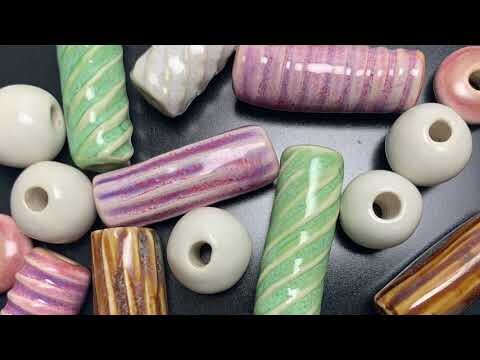Reduction firing techniques in ceramics have long been utilized to create unique and striking pottery pieces. By controlling the amount of oxygen present during the firing process, artists are able to achieve stunning effects, such as metallic finishes and rich color variations. In this article, we will explore the art and science behind reduction firing, its history, and how modern artists are pushing the boundaries of this traditional technique to create truly innovative works of art.
What is reduction firing in ceramics?
Reduction firing in ceramics involves creating an oxygen-free environment to prevent glazes from oxidizing during maturation. By adjusting the fuel source or adding organic material, the oxygen is consumed, allowing for unique color effects and finishes on the pottery.
This process is commonly used in gas kilns or Raku firing, where the reduction atmosphere enhances the vibrancy and depth of the glazes. By carefully controlling the oxygen levels, artists can achieve rich, metallic finishes and distinct patterns on their ceramics, making reduction firing a popular technique in pottery-making.
What techniques are used for firing ceramics?
There are two principal methods of firing pottery: open firing and the use of kilns. Open firing is the most primitive of these methods but it does take a lot of skill to produce pottery this way. The use of kilns allows for more controlled and consistent firing, resulting in a higher quality of pottery. Below is a piece that has been fired, showcasing the intricate techniques and expertise involved in the process.
What does reductive clay technique involve?
Reductive clay technique is a method used in ceramics to create unique and dynamic effects on clay pieces. By reducing the amount of oxygen in the kiln during firing, the flame and fuel seek out more oxygen, resulting in a chemical reaction that alters the appearance of the clay body.
This process can produce stunning colors and textures on the finished piece, making reductive clay technique a popular choice among artists looking to create visually striking ceramic works. By carefully controlling the reduction process, artists can achieve a wide range of effects, from metallic lusters to deep, rich hues, adding depth and intrigue to their creations.
Transforming Clay with Precision and Depth
Transforming clay into intricate and meaningful works of art requires a delicate balance of precision and depth. Each movement of the sculptor’s hands must be calculated and intentional, shaping the clay into a form that embodies both beauty and complexity. As the clay is molded and manipulated, layers of meaning and emotion are infused into the piece, creating a deeper connection between the artist and their creation. With careful attention to detail and a profound understanding of the medium, clay is transformed into a masterpiece that resonates with viewers on a profound level.
Unleashing the Power of Reduction Firing
Unleash the power of reduction firing and watch as your pottery comes to life in brilliant, vibrant colors. By controlling the amount of oxygen during the firing process, reduction firing can produce stunning, unique effects that are impossible to achieve with other firing methods. From deep, lustrous blacks to rich, earthy reds, reduction firing allows for endless possibilities, making each piece a true work of art. Embrace the magic of reduction firing and elevate your pottery to a new level of beauty and complexity.
Elevating Your Ceramic Creations
Are you ready to take your ceramic creations to the next level? Elevate your artistry and craftsmanship with our premium selection of high-quality clay and glazes, designed to bring out the best in your work. From vibrant, rich colors to durable, long-lasting finishes, our products are carefully curated to help you bring your artistic vision to life. Whether you’re a seasoned professional or just starting out, our range of materials and tools will inspire and support your creative journey. Elevate your ceramic creations and unlock your full artistic potential with our exceptional products.
A Guide to Mastering Reduction Firing
Reduction firing is a key technique in ceramics that involves altering the atmosphere inside the kiln to achieve unique effects on the clay. By introducing a reduction agent, such as carbon monoxide, the oxygen levels inside the kiln are reduced, resulting in vibrant colors and distinctive surface textures. This guide will provide you with the knowledge and skills needed to master reduction firing and create stunning pieces of pottery.
To begin mastering reduction firing, it is essential to understand the different stages of the firing process and how to control the atmosphere inside the kiln. By carefully monitoring the temperature and oxygen levels, you can achieve the desired reduction effects on your pottery. Experimenting with different reduction agents and techniques will help you develop your own unique style and create one-of-a-kind pieces.
With practice and dedication, you can unlock the full potential of reduction firing and take your pottery to the next level. By learning how to manipulate the atmosphere inside the kiln and experimenting with different firing schedules, you can create truly remarkable pieces that showcase your artistic vision. Whether you are a beginner or an experienced potter, this guide will help you hone your skills and master the art of reduction firing.
Incorporating reduction firing techniques in ceramics can truly elevate the quality and visual appeal of the finished pieces. By carefully controlling the atmosphere within the kiln, artists are able to achieve stunning, unique effects that simply cannot be replicated with other firing methods. The transformative nature of reduction firing opens up a world of creative possibilities, allowing for the creation of one-of-a-kind pieces that showcase the beauty and complexity of this ancient art form. With its ability to produce rich, dynamic surfaces and vibrant colors, reduction firing is a technique that continues to captivate and inspire ceramic artists around the world.



